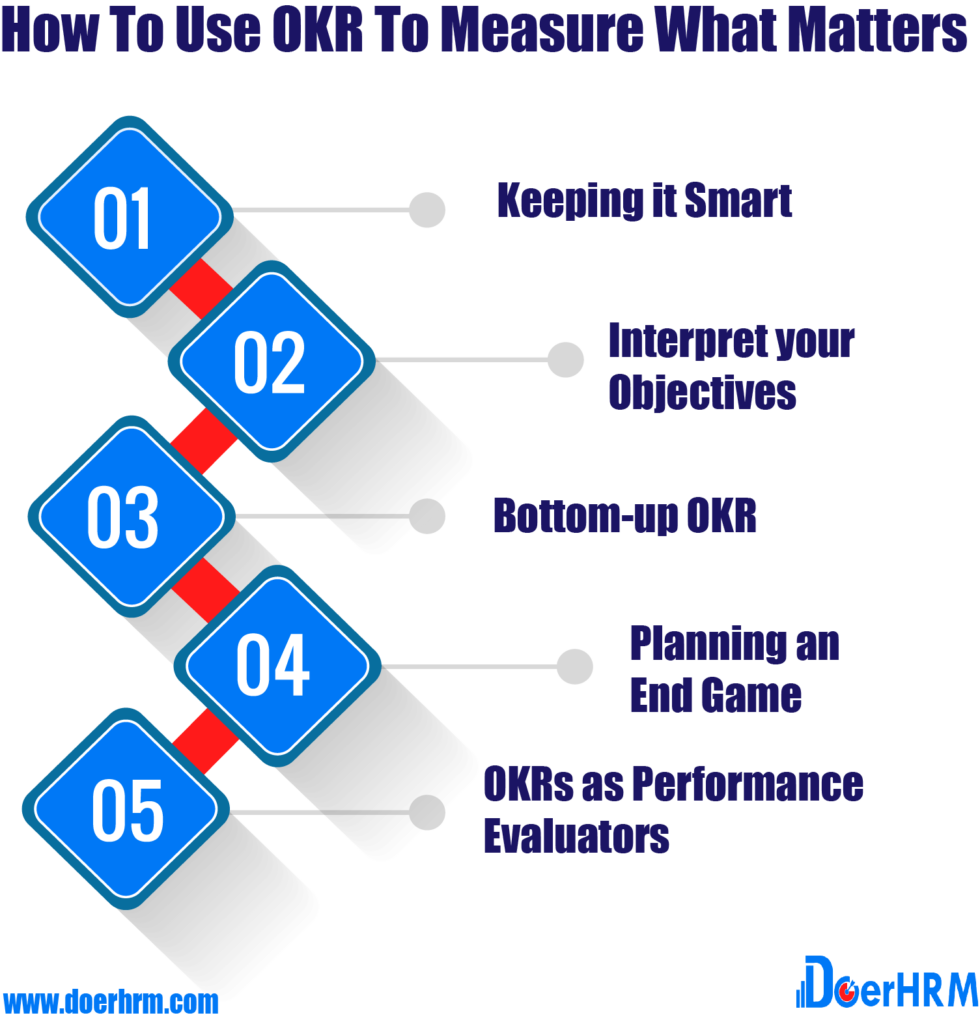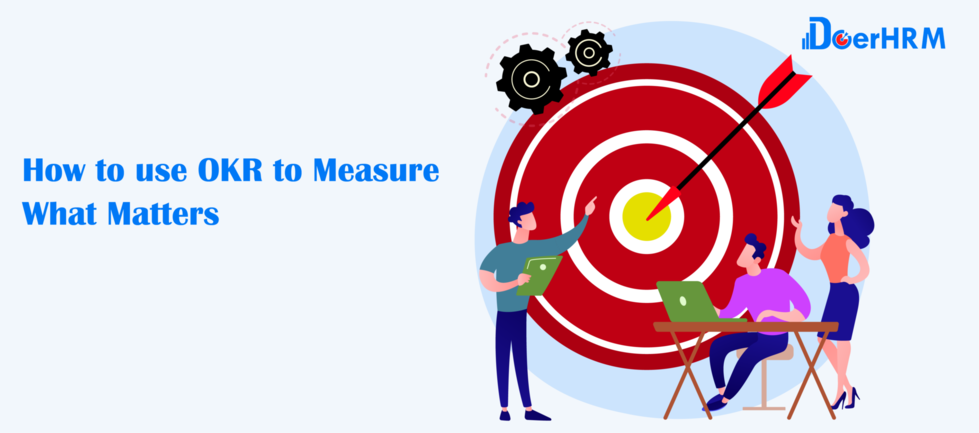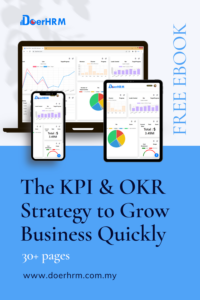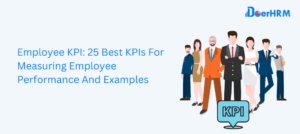What is OKR? - Measuring What Matters with OKRs
OKR stands for Objectives and Key Results—more specifically, an objective tied to crucial results. Now, K-Key is very critical to understand this concept. The OKR concept is defined as a strategic, goal-setting framework for defining and tracking objectives and their outcomes. In a more standardized form, the objective is said to be the qualitative part for setting a goal for a set time. And, KR-Key Results is the quantitative part used to focus the group or an individual around a goal. In much simpler terms, objectives are goals and intents. At the same time, KR-Key Results are time-bound and measurable milestones under these goals and intents.
Not to confuse OKR with sister term KPI, KPI stands for Key Performance Indicator. It is a measurable value that demonstrates how effectively a company is achieving key business objectives. KPIs are sometimes the same as the key results used in an OKR framework. You can always differentiate them by remembering that OKR is an outcome, and KPI is a measurement.
How to use OKR?
To learn how OKRs can help take your team to the next level, enroll in our OKR Mastery course and earn a 35% commission when you invite others to join this course!
OKR is often misinterpreted as a zero-sum game, but instead, there are processes and collaborations involved. They are containers for goals, serving both good goals and bad ones. OKRs are the easiest to misuse, overuse, and abuse of all the known management tools. To get a good OKR, that is, to measure what matters and accelerate your organization’s success, follow me through the how-to below.

1. Keeping it Smart : SMART stands for:
- Specific – When setting up your objective, brainstorm the different ways you can reach the result. Create mini-goals within your key achievements. Know what you have to do to achieve your key results. The more specific you are, the clearer your expectations will be from your managers.
- Measurable – Your key results need to have a unit of measurement. This step is harder for goals that are not quantifiable, then a 1–on–1 session with your manager, to negotiate the measures that you will be held accountable for.
- Ambitious – As an employee, you may think you need to contribute to every department's objective. Still, the result is often spreading yourself thin. Therefore, you need to prioritize your objectives according to what the business needs the most, even if you need to get out of your comfort zone.
- Realistic – Setting high-level results may seem quite hopeful, but any tint of vagueness will trump the process. Usually, when it comes to goals, less is truly more. One big reason people will seemingly commit to a goal, even though they quietly reject it, is that they perceive the goal to be non-feasible.
- Timely – Set goals with suitable time frames and focus on objectives achievable in the given time frame. This ETA is usually the end of the quarter or end of the year.
2. Interpret your Objectives
It is also important to interpret your objectives using the accurate interpretation processes such as sharing/cascading. The organization’s objectives may be overwhelming for some employees since they cannot see how their jobs are contributing to the company’s success. For example, as a payroll clerk, how do I help my company reach 10,000 users? Therefore, it is vital to share higher-level objectives so that all members of your organization are well aligned with the vision
3. Bottom-up OKR
This is one common anti-pattern, usually encountered in management. Examples are cases where managers create the OKRs for the employees, the financial team defining the expected results for everyone or product managers creating the OKRs for the team, etc. The problem here is that goals that are created by “planners” and handed down to “implementers” are usually wrong. It is better to have people doing the work, also helping you find ambitious and realistic goals. Set from the bottom up, not top-down.
4. Planning an End Game
Another way to use OKR to measure what matters is by planning the yields rather than actions. It should not be used to do things but to achieve things. The question here is, what is the difference? Your natural preference is to use OKR to express a plan of action like:
O: Become an executive in the enterprise
KR: Lunch v2.2 of the mobile app
KR: Integrate with SalesForce
KR: Switch to the new onboarding flow
KR: Run 12 paid campaigns
5. OKRs as Performance Evaluators
OKRs are not contracts between managers and employees. If anything, they are tools used by the managers to perform better. One way managers perform better by using OKR is by communicating clearly and transparently what they wish to achieve and how they would like to measure success. More often than not, managers think OKRs are ways to get people more committed, work harder, and be more accountable. Some even try to tie performance evaluation, compensation, and promotion to OKR. While it is true that reasonable goals help people and teams stretch themselves and achieve more, the improvement comes from the clarity, focus, consistency, and sense of the impact that the goal brings.

I hope you enjoy reading this blog post.
If you want my team at DoerHRM to help you build a winning team for your company, just click to speak with our KPI consultant.










